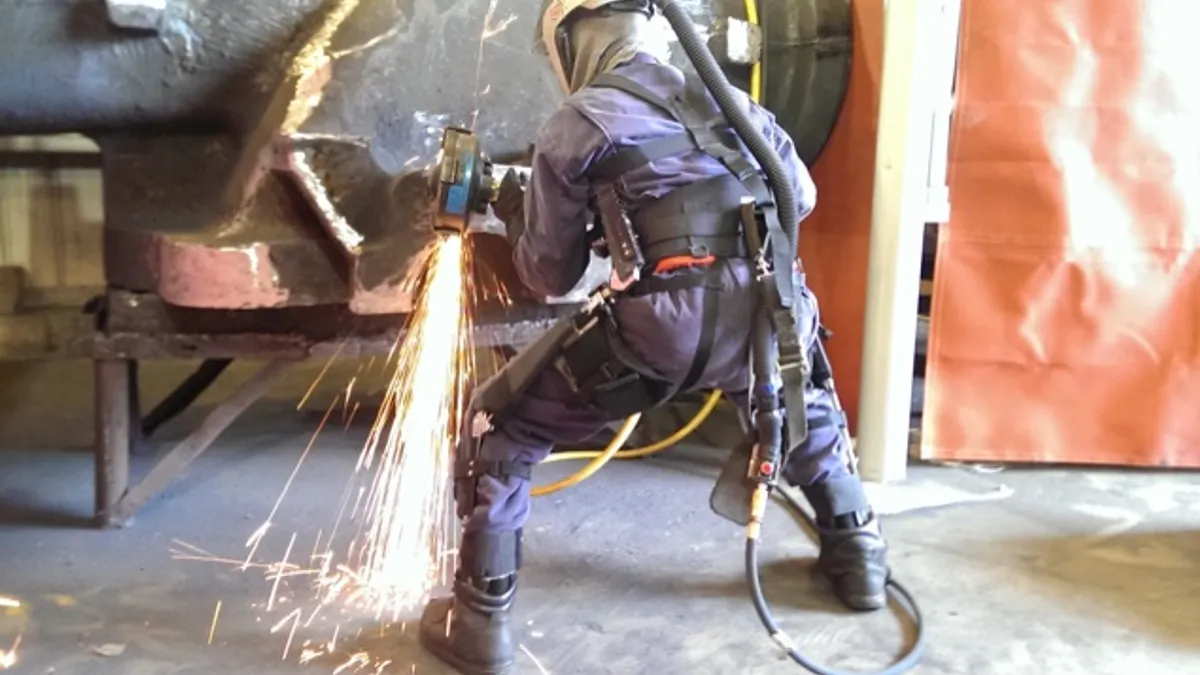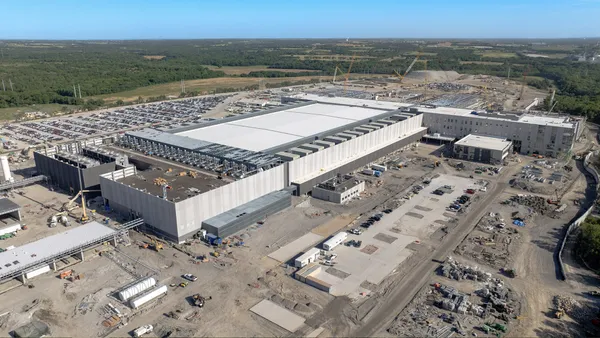There's no doubt that innovation in construction materials and methods is on the rise. From 3-D printing, to exoskeletons, to a timber that can safely build high-rises, new products have captured the imagination of the construction industry.
3-D printing, also knows as additive manufacturing, allows users to "print" an object, layer by layer, from a digital file. Researchers in the Netherlands have developed a printer that can produce fine, detailed concrete panels 36-feet long, 16-feet wide and 13-feet high. Two house-building printers have also been unveiled this year. The gargantuan WASP Big Delta — and portable Apis Cor, capable of building 1,000 square feet a day — promise to usher in a new era of homebuilding with their ability to build quickly and in a variety of environments. 3-D printing technology could even reach outer space.
New ideas about how material stalwart concrete should function have given rise to a new generation of products as well. A team at Cardiff University in Wales is exploring "self-healing" concrete, which could potentially save billions of dollars globally in concrete repairs each year. Topmix Permeable has also made waves with a video demonstration showing its product's capability of "drinking" up to 1,000 gallons of water in a minute, opening up a viable alternative to traditional methods of storm water management.
What drives innovation?
So what drives construction material and method innovations like these? Amanda Johnson, senior associate at OZ Architecture in Colorado, chalks it up to the market.
"The sophistication of the market is demanding buildings, both new and existing, to differentiate and provide users with qualities that they won’t be able to find elsewhere," she said. "In new construction, authenticity in the materials and construction methods are forcing architects and designers to look beyond the familiar."
Johnson and OZ are big proponents of another material responsible for changes in building: cross-laminated timber (CLT). CLT is a multi-layer engineered wood product with fire-resistant capabilities similar to heavy timber, meaning that buildings using CLT, despite myths to the contrary, are not "tinderboxes" waiting to go up in flames.
According to the American Wood Council, CLT also has the advantage of being renewable, sustainable and reducing a building’s carbon footprint, as CLT panels continue to store carbon absorbed during a tree’s growing cycle. The United States Department of Agriculture has also been promoting the use of CLT, awarding $1.5 million to the winners of the recent U.S. Tall Wood Building Competition, for which competitors submitted designs for high-rise wood buildings.
Another wood with the potential to be an industry game-changer is bamboo. Dirk Hebel, assistant professor of architecture and construction at the Future Cities Laboratory in Singapore, believes that bamboo, because of its tensile strength, could one day be used as an alternative to reinforced steel. Adding to its "green" appeal, bamboo does not require replanting after harvesting and, like CLT, retains carbon.
A competitive environment
Also encouraging breakthroughs in the development of construction materials and methods today is the NOVA Innovation Competition, created in 2008 and sponsored by Saint-Gobain, a manufacturer of construction and high-performance products. Organizers said the contest "rewards start-ups offering the most innovative solutions in the field of habitat, sustainable products, advanced materials, renewable energy sources and high-efficiency building solutions."
Minas Apelian, who oversees NOVA and is the vice president of R&D, quality and external venturing at Saint Gobain, said construction has been "a very traditional industry, with conservative spending, but it’s ripe for disruptive technologies and services that can change the construction market."
He added, "And innovation and entrepreneurship... well, that’s what America was founded on, and that’s what propels growth and advancement."
The winner of this year's NOVA competition will be decided on Nov. 18 at the Greenbuild Expo in Washington DC, and finalists this year run the gamut from materials made from paper waste to robotics.
One finalist, Melodea, has developed an industrial process for the extraction of Nano Crystalline Cellulose (NCC) from agricultural and industrial waste. The resulting product can be used in a wide variety of eco-friendly foams and to strengthen glues and paints.
Another competition hopeful is q-bot, which has created robots to survey and map difficult-to-reach locations and apply insulation in previously inaccessible locations, such as under floorboards and other tight spots.
Another finalist is US Bionics, creator of lightweight exoskeleton suits designed to reduce the muscle force required for construction work by 50%, thereby reducing injuries and stress to workers' shoulders, lower backs, and legs.
Industry encouragement
These are all examples of what the industry might see on job sites in the future, and innovators will always be motivated by the cash and prestige of winning a competition like NOVA. But in what other ways can the construction industry encourage and foster new ideas?
"The construction industry," Apelian said, "can encourage innovation through all of the players collaborating to identify, define and develop market needs. This includes large, established corporations working synergistically with start-up companies in the spirit of open innovation."





















